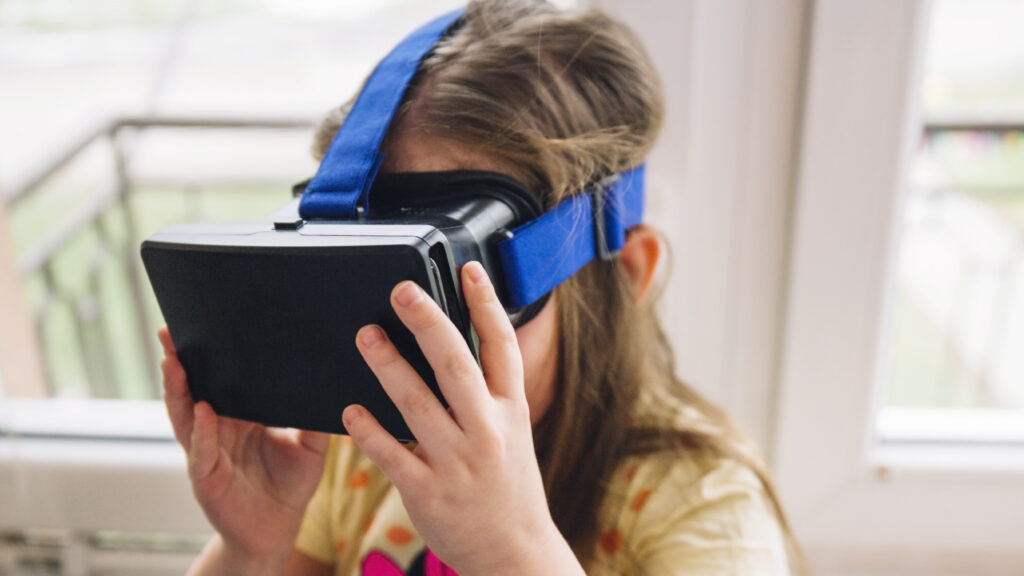Technology to Enhance Learning in Special Education: Tools, Benefits, and Real-World Success Stories

Technology in Special Education is revolutionizing education, particularly for students with special needs. Imagine a classroom where every student can access personalized learning tools, engage interactively, and overcome barriers with tailored resources. This vision is becoming a reality thanks to advancements in educational technology designed to enhance learning in special education.
In this article, we’ll explore how to use technology in special education to improve educational outcomes. We’ll cover the latest tools, their benefits, real-world success stories, and the challenges of implementation. Whether you’re an educator, parent, or advocate, this guide will help you understand and utilize innovative educational technologies to support students with diverse needs effectively.
“Technology in special education is not just about access, it’s about creating opportunities for students with disabilities to achieve their full potential and participate fully in their education.”
O’Reilly, M. (2022). The Role of Technology in Special Education. Educational Technology Review, 15(3), 45-58.
Understanding the Impact of Technology in Special Education
The Transformative Role of Interactive Technology for Special Education
First, technology is reshaping special education by offering personalized, engaging, and accessible learning experiences.
Key Statistics on the Adoption of Customized Learning Technology:
- A report from the National Center on Accessible Educational Materials (AEM) reveals that over 90% of U.S. schools use assistive technology in special education for students with disabilities.
- Research in the Journal of Special Education Technology indicates that 85% of teachers using educational technology for special needs report increased student engagement and improved performance.
These statistics highlight the critical role educational technology plays in special needs education and, moreover, its growing adoption in schools.
Addressing Diverse Learning Needs through Technology-Assisted Learning for Special Needs
Assistive technology in special education helps address various disabilities and learning challenges, such as:
- Learning Disabilities: Tools like speech-to-text software assist students with dyslexia by converting spoken words into written text.
- Autism Spectrum Disorders (ASD): Apps that support communication and social skills development are particularly beneficial.
- Visual and Hearing Impairments: Screen readers and captioning tools enhance content accessibility for students with visual or hearing impairments.
- Adapted Books for Special Education: These books, designed with modifications, make reading more accessible and engaging for students with diverse learning needs.
By catering to these needs, specialized learning technologies make learning more inclusive and effective.
Exploring Assistive and Educational Technologies in Special Education
Assistive Technologies in Special Education
- Speech-to-Text Software:
- Dragon NaturallySpeaking: Converts spoken words into text, aiding students with dyslexia or motor difficulties.
- Dragon NaturallySpeaking: Converts spoken words into text, aiding students with dyslexia or motor difficulties.
- Augmentative and Alternative Communication (AAC) Devices:
- Proloquo2Go: An AAC app that helps non-verbal students communicate through symbols and text, customizable to individual needs.
- Screen Readers and Magnification Tools:
- JAWS (Job Access With Speech): A screen reader that helps students with visual impairments by converting text to speech.
- ZoomText: Enlarges text and images on the screen, making content more accessible for students with low vision.
Educational Apps and Software Technology in Special Education
- Apps for Literacy and Numeracy:
- ABCmouse: Offers interactive games and activities to support early literacy and numeracy skills.
- MathTalk: Aids students with math difficulties by allowing them to solve problems using speech recognition.
- Interactive Educational Games:
- Khan Academy Kids: Provides engaging and interactive activities tailored to various learning styles and abilities.
- Best Reading Programs for Special Education: Programs like Lexia and Read&Write offer tailored reading support, improving literacy skills for students with special needs.

Emerging Technologies in Special Education
Furthermore, emerging technologies are making significant impacts:
Virtual Reality (VR) Google Expeditions
This tool facilitates virtual field trips, making learning more immersive and engaging for students with autism who benefit from visual learning. By using Google Expeditions, educators can take students on virtual journeys to explore distant places, historical events, or complex scientific phenomena, which can be particularly beneficial for students who struggle with traditional learning methods. For example, a student who finds it challenging to understand the concept of the solar system might benefit from a virtual tour of space, which makes abstract concepts more tangible and easier to grasp. Furthermore, this immersive experience can help maintain students’ attention and increase their engagement with the material.
Augmented Reality (AR) Aurasma
An AR app that overlays digital information onto the real world, helping students visualize complex concepts in subjects like science and geography. For instance, when a student points a device at a textbook page, Aurasma can display interactive 3D models of the human anatomy or geographic features. This visual enhancement not only makes learning more engaging but also supports different learning styles. In addition, AR can bring abstract concepts to life by providing interactive elements that students can explore, which may help them retain information more effectively.
Artificial Intelligence (AI) CogniToys
These AI-powered toys adapt to individual learning styles and needs, offering personalized educational content. For example, a CogniToy might adjust its responses based on a child’s progress, providing tailored feedback and suggestions to help them improve in areas where they are struggling. What’s more, these toys can engage students in a way that feels natural and enjoyable, which can encourage more frequent and effective learning sessions.
AI Special Education Tools
AI-driven platforms provide customized learning experiences and adapt to the unique needs of each student. These tools analyze students’ interactions and performance data to offer personalized lesson plans, targeted exercises, and adaptive feedback. For instance, if an AI tool identifies that a student is having difficulty with reading comprehension, it might adjust the difficulty level of texts and provide additional practice exercises suited to that student’s specific needs. Moreover, these platforms can continuously adjust their approach based on real-time data, ensuring that the support provided is always aligned with the student’s current abilities and progress.
Summary
In summary, emerging technologies such as Google Expeditions, Aurasma, and AI-driven tools are revolutionizing special education. By incorporating VR, AR, and AI into educational practices, we can provide students with engaging, interactive, and personalized learning experiences. Each of these technologies offers unique benefits and, equally important, contributes to making education more inclusive and effective. As we continue to explore and implement these innovations, we can enhance learning outcomes and support students in reaching their full potential.
Real-Life Success Stories
Case Study 1: Supporting Students with Autism with Adaptive Educational Tools
At Lincoln Elementary School, the integration of technology has brought remarkable improvements in supporting students with autism. The school utilized Proloquo2Go and Google Expeditions to enhance the learning experience for these students.
First, Proloquo2Go, an augmentative and alternative communication app, enabled non-verbal students to communicate more effectively. This technology significantly enhanced classroom interactions. Furthermore, it allowed students to express themselves in ways they couldn’t before, fostering a more inclusive and interactive learning environment.
Next, Google Expeditions brought a new level of engagement to the classroom through virtual field trips. These immersive experiences made complex topics more understandable and captivating for the students. Again, the technology played a crucial role in making learning more accessible and enjoyable for students with autism.
Moreover, Principal Sarah Johnson shared her positive experiences with the technology: “The technology has transformed our students’ learning experiences. They are more engaged and communicate more effectively.”
Case Study 2: Enhancing Literacy for Students with Dyslexia by using Technology-Based Special Education Solutions
Similarly, Oakwood High School has seen tremendous progress in enhancing literacy for students with dyslexia through the use of innovative technologies. The school implemented Dragon NaturallySpeaking and MathTalk to support these students in overcoming their learning challenges.
Firstly, Dragon NaturallySpeaking, a speech recognition software, allowed students with dyslexia to express their ideas more easily. This tool improved their writing skills and enabled them to participate more actively in their academic work. In addition, it boosted their confidence, knowing they could communicate their thoughts without the barrier of traditional writing.
Equally important, MathTalk facilitated a better understanding of mathematical concepts for these students. This technology helped them grasp complex math problems, leading to better test scores and increased confidence in their mathematical abilities.
Lastly, Teacher Emily Roberts highlighted the significant impact of these technologies: “Our students have made incredible progress thanks to these technologies. It’s remarkable to see how technology can overcome learning barriers.”
In conclusion, these real-life success stories from Lincoln Elementary School and Oakwood High School illustrate the transformative power of technology in education. These cases demonstrate how innovative tools can support students with diverse learning needs, ultimately leading to more effective communication, higher engagement, improved writing, and enhanced math proficiency.

Overcoming Barriers and Best Practices for Effective Use of Technology in Special Education
Challenges in Implementing in Specialized Learning Technologies Special Schools
Lastly, we address challenges in technology implementation:
- Cost and Funding Issues: Technology can be costly, and securing funding can be challenging. Explore grants and funding opportunities from sources like the Department of Education in your country and private foundations.
- Training and Professional Development: Effective technology integration requires proper training for educators. Invest in ongoing professional development and support to ensure successful implementation.
- Accessibility and Device Compatibility: Ensure technology is compatible with existing systems and accessible to all students. Conduct thorough assessments before adopting new tools.
- Assessment Tools for Special Education: Ensure that tools used for assessing the progress and needs of students are effective and accessible, providing accurate and helpful insights for educators.
Solutions and Best Practices for upcoming Tech-Enhanced Tools for Special Education
In addition, consider these solutions and best practices:
- Securing Funding: Seek funding options such as federal grants, state educational funds, and partnerships with technology companies. Consider crowdfunding and community fundraising as additional sources.
- Effective Training Programs: Implement comprehensive training programs for educators, including workshops and online courses. Foster collaboration among teachers to share best practices.
- Ensuring Accessibility: Choose technology that meets accessibility standards and provides features for various needs. Regularly evaluate technology to ensure it benefits all students.
Conclusion
Understanding how to use technology in special education to enhance learning is crucial for creating inclusive and supportive educational environments. By exploring and implementing the right tools, we can, furthermore, help students with special needs achieve their full potential.
First, explore the technologies mentioned in this article, and then seek out additional resources related to technology for special education. Next, consider how you can integrate these tools into your educational practices. Finally, share your experiences and insights in the comments below. What’s more, contact us for more information on enhancing special education through technological innovations.


Pingback: Innovative Teaching Resources